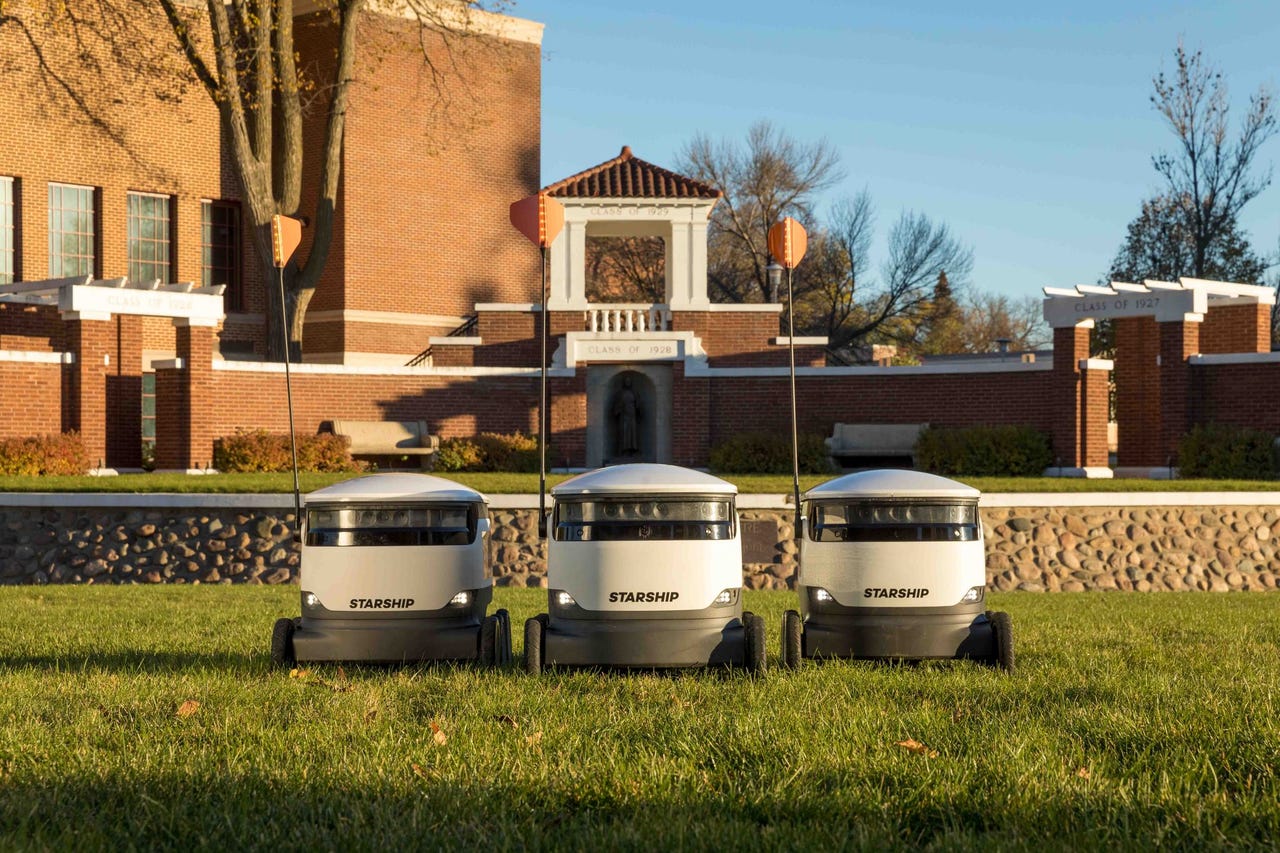Delivery robots are taking over college campuses


Innovation
Another campus, another rollout of roving delivery robots. You may not know it, but delivery robot vendors are making a play for campuses across the country in a bid to grab a market toe-hold in relatively structured environments free of much of the regulatory complications of municipalities.
Starship Technologies has delivered 30 autonomous robots for food service to South Dakota State University in the latest example. The robots will deliver from three campus vendors -- Grille Works, Papa Johns, and Starbucks -- with additional locations added soon.
"The one thing we have learned in recent years is that students and faculty like flexibility in their dining options," said Doug Wermedal, associate vice president for student affairs at SDSU. "The ability to have something delivered to various locations throughout campus and the community will be impactful to our students and employees as they continue to manage busy and demanding schedules. We are excited about this partnership, the robotics technology and the student employment opportunities Starship will bring to our campus."
But does a campus of 14,000 students and faculty need 30 delivery robots? With ongoing concerns about clustered dining during the pandemic, there's some case to be made for the flexibility and public health benefits of contactless delivery. One thing is for certain, and that's that Starship Technologies has identified college campuses as important strategic markets in a highly competitive delivery paradigm and shifting regulatory considerations.
Starship already has robots on the campuses of Arizona State University, Purdue University, George Mason University, and Northern Arizona University. Since its launch, all campuses have increased the number of robots, dining options, and hours of operation to meet the high demand for the service.
While the number of robots deployed on campuses isn't a show stopper, the value to the company is exceptional. In many ways, colleges are the perfect test bed for delivery robots. Students tend to live well within a 30-minute delivery radius. Integration with meal plans, which is the model governing the SDSU rollout, helps ensure a ready customer base, and participating universities are easily wooed by the allure of being a forward-thinking institution with Silicon Valley connections (Starship is headquartered in the Bay Area). Campuses also offer an exceptional proof of concept for a variety of Starship's constituents, from investors to prospective customers to regional regulatory bodies that are approaching robot delivery with appropriate caution.
Halfway through 2021, Starship announced that it had repeatedly set delivery records in its campus deployments during the pandemic.
"I hadn't even heard of robot delivery before I started school, and now I don't see a future without it," said Claire Sunderman, a student at Bowling Green State University, where the company has a deployment. "I'd be perfectly happy to have a robot deliver a lot more things because it would save me so much time. Now that I am graduating, I will really miss the convenience and seeing the robots on campus everyday -- I wish I could take one with me!"
That sort of attitude bodes well for companies like Starship, which aren't just proofing technology but also training a new generation of adopters. Other autonomous delivery companies have adopted similar tacks. A company called Flytrex, for example, made headlines by offering food delivery via drone at a golf course in North Dakota recently. The access-limited space permits management to collect waivers from golfers, which allows Flytrex to avoid strict FAA regulations when operating over public areas.
But ultimately, these testbeds, while good for short term adoption and product refinement, aren't sufficient to sustain these companies. For widespread adoption to occur, automation firms still need to tackle the thorny issue of local regulatory hurdles. So far, companies like Starship (either out of prudence or because they don't have deep enough pockets) have avoided the blitz mentality of Uber and Bird, which left local regulators scrambling to react and have opted instead for a more methodical rollout.